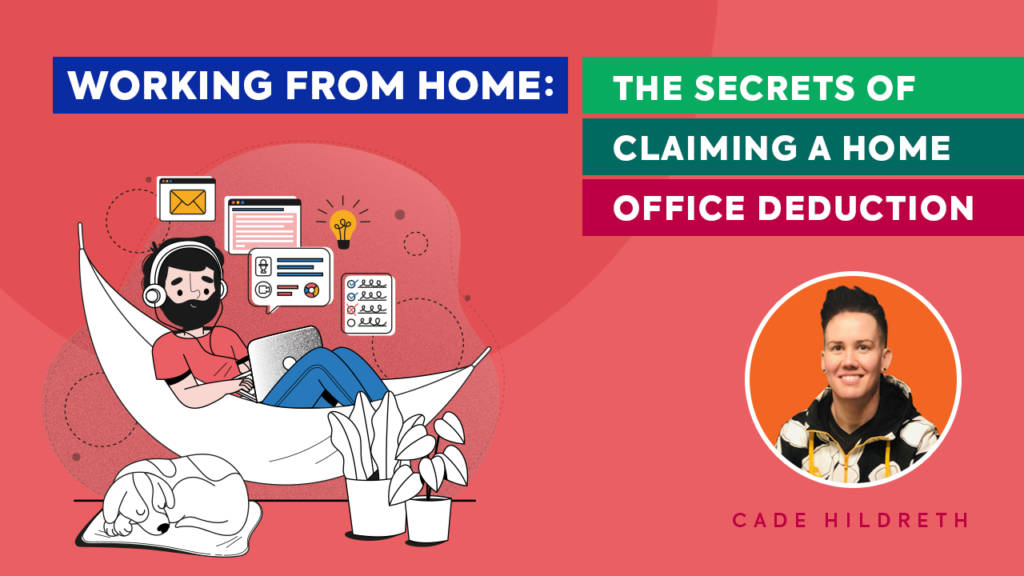|
|
Nearly 70% of all small businesses in the U.S. start at home, which is why it is valuable to understand the nuances of claiming a home office deduction.
This is due to obvious reasons (renting office space isn’t cheap), but working from home is a lot more financially advantageous than most people realize. The IRS has rules that allow business owners to write off rent, utilities, equipment, renovations, real estate taxes, and more. In many cases, these tax rules can bag you $1,000 or more come tax time.
The average person can take off a lot of their everyday expenses and alleviate some of the stress that comes with entrepreneurship. You can even have your home office in a separate space from your actual home. How much you can get off your home office deduction will depend on meeting certain requirements and keeping proper documentation.
Establishing Your Business Space
When claiming a part of your home as a business space, it has to count as an “exclusive” business space. This means you can’t throw a desk in the guest room and automatically qualify as a business space. If your space is where you rent out or offer daycare services, then that’s a different story.
Get the permission to use said space for those activities and you got yourself an exclusive business deduction. One other exception to this rule of business use is dedicating the room as a place of storage for supplies or inventory.
Valuing Your Home Office Deduction
You have two options for calculating the business deductions that you qualify for: simplified and standard. Simplified means less number-crunching, as you’re not deducting individual expenses. It only accounts for the square-footage denoted as your business space.
The standard method measures everything you’ve invested in your home business. This includes, but is not limited to property taxes, utilities, cable and internet, repairs, upgrades, and electronics that you can prove are used for business.
Obviously, the potential deductions are greater if you use the standard deductions. Doing so can get complicated and time-consuming. You can review the 8829 Form to learn about what you can and can not deduct.
Comparing the Two Methods
How much time do you have to fill out your taxes? Do you keep track of your expenses consistently? If you’re curious about which method is going to save you time and money, here is what you can expect from each process.
Standard Expense Deduction
Deducting expenses related to your business space falls into two categories: direct and indirect. Direct expenses are purchases like renovations for the room, new office equipment, and furniture. Indirect expenses will include your bills, taxes, and subscription services.
Indirect expenses are set at a hard cap of the percentage of space that your business space takes up in your home. No, you can’t claim an entire living room that also happens to include your desk for freelancing. Direct expenses are 1:1 matches on what was spent.
The story is a little different for the simplified version.
Simplified Business Deduction
As we previously mentioned, the simplified version of business deductions is a basic percentage. While it is easy enough to eliminate the need for a tax preparer, it does have its limitations. You can’t claim more than 300 square feet and you cannot exceed more than $1,500 for a 300 square foot deduction.
Is it worth collecting all your receipts if your office takes up such a small space? Time is money, so if your home office is only a few hundred square feet in a home that is 800+ square feet, you’re more or less running in place for those savings.
On the other hand, if your business does occupy a large area and there are a lot of extra expenses that come with the work, you should probably sit down and do the math.
Potential Caveats to Consider
Remember, if you don’t go for the simplified deduction, you must save copies of all the receipts related to your business expenses. Download any online bank statements and scan bills if you aren’t good at filing mail. In the event you are actually audited, you’ll have proof of all your numbers.
Don’t allow the prospect of an audit prevent you from getting the most from your home office deduction.
Audits generally only happen to businesses that exhibit unusual behavior. It is worth noting that if you’re a homeowner and you decide to file for the standard expenses deduction, you will no longer qualify for capital gains tax exemption when you sell. Those who end up selling their home after living in it for two out of the five years leading up to the sale can save a lot on capital gain taxes.
The capital gains deduction is good for up to $250k in profit, $500k if filing jointly with a spouse. Depreciation is another potential setback for the standard business deduction method. You have to list the depreciated value of your home when calculating your deductions.
This means that when you sell your home, you have to value it at the depreciated value for capital gains taxes. For instance, selling your home with 15% used as a home office space means 15% of your profits are subject to capital gains taxes.
Calculate Your Potential
At the beginning of this article, the choice between simple and standard home office deduction may have seemed easy. After learning about some of the rules and requirements, though, the line gets a little blurry. That’s okay, the average person doesn’t and shouldn’t know tax code that intimately.
This is why it’s better to consult a tax specialist or at least someone who has experience running a business out of their home. If you have any questions, contact us anytime. We’ll answer to the best of our knowledge and love hearing feedback from our readers.
